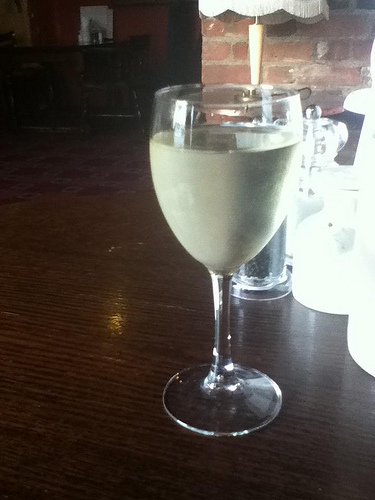Photo courtesy of Debbie C on Flickr
Question from Emily: Why does wine cause headaches? Is it the sulfites?
Reply: Hi, Emily. Thanks for writing! I’m no physician and very little is understood about this, but one thing that’s become clear is that it’s not the sulfites.
Sulfites: Lots of people swear up and down that sulfites are the cause, but science says otherwise. If you’re convinced that sulfites are to blame, try eating some brightly colored, dried fruit (the bright color indicates a high level of sulfites). If you can eat them without any effect, then sulfites aren’t the issue. That’s not to say that sulfites are harmless. Asthmatics need to be very careful about wine, fruit juice, processed foods and more.
Red Wine Headache Syndrome: If you only react to red wine, you’re a member of this not-so-small group of wine lovers. For some people, it takes only a small amount of red wine to set off a nasty headache that may last a very long time. It’s common enough that a great number of studies have been done. Medical researchers have tested their subjects on cheap and expensive wine, domestic and imported wine and it doesn’t make any difference.
There’s some helpful advice from these researchers, though. If you’re prone to red-wine headaches, try taking some aspirin or ibuprofen before drinking the wine (Tylenol doesn’t work.) They discovered that these drugs seem to block the reaction for many of their subjects.
Tannin: It’s possible that people who are prone to migraines might also react to tannin but it’s fuzzy science at this point.
Prostaglandins and amines: Some doctors theorize that the headaches have to do with prostaglandins, which some people can’t metabolize. Others blame point to other amines, like histamines, but there are many foods that are higher in histamines than wine.
Alcohol! It seems the last thing any of us choose to blame is the most likely culprit – the alcohol! If you get a headache or hangover after sharing a bottle of wine with friends, check the alcohol. The levels can vary significantly. The wildly popular Moscato wine is often below 10%. Napa Cab is often upwards of 14%. Are you a fan of red Zinfandel? It’s notoriously high in alcohol.
Alcohol opens blood vessels and increases the blood flow to the skin. If the vessels in your nose and sinus areas swell, you may feel some pressure and get a headache. Shoot for lower alcohol wine, drink less or try a pain reliever if you think this might be what’s happening to you.
TIP! If you’ve noticed that European wine doesn’t seem to get to you the way California wine does, compare the alcohols – European tend to be lower in alcohol than California wines dues to differences in climate.
ANOTHER TIP! Great headache preventative: Drink a glass of water for each glass of wine; alcohol causes dehydration.
For a free email subscription go to home page, right column







